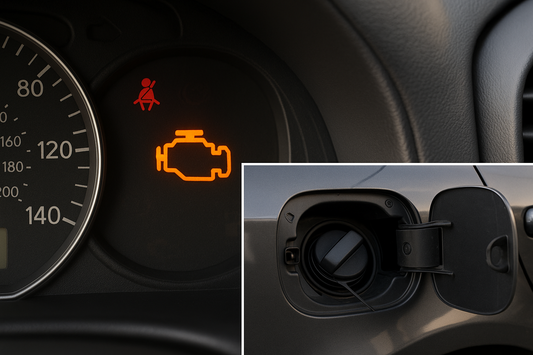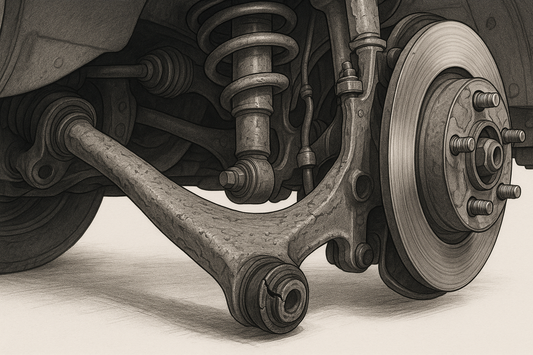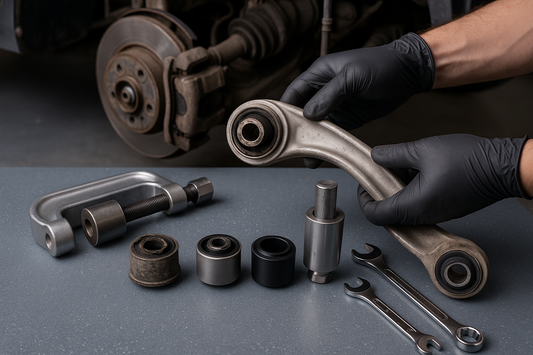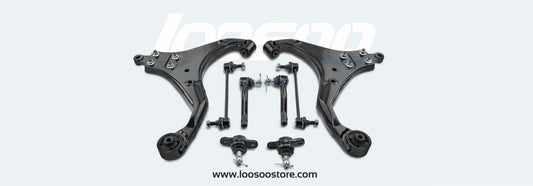Les amortisseurs sont essentiels pour une conduite souple et contrôlée, mais de nombreux propriétaires de véhicules se demandent souvent : « Les amortisseurs ont-ils une durée de vie ? » Que vous ayez acheté des amortisseurs comme pièce de rechange ou que vous vous demandiez combien de temps ils dureront sur votre véhicule, il est crucial de comprendre leur durée de vie. Dans cet article, nous examinerons la date de péremption des amortisseurs, les facteurs qui influencent leur longévité et comment les stocker correctement pour une utilisation ultérieure.
Les amortisseurs expirent-ils ?
Les amortisseurs n'ont pas de date de péremption fixe comme les aliments ou les médicaments, mais ils peuvent se détériorer avec le temps s'ils sont mal stockés ou exposés à des conditions défavorables. Stockés dans des conditions optimales, les amortisseurs peuvent durer de nombreuses années avant d'être installés. Cependant, une fois installés, leur durée de vie est limitée par l'usure due à une utilisation régulière.
Voici quelques facteurs clés qui influencent la durée de vie des amortisseurs :
1. Conditions de stockage
Un stockage approprié joue un rôle essentiel dans la longévité des amortisseurs. Ils doivent être stockés dans un endroit frais et sec, à l'abri de la lumière directe du soleil et de l'humidité, afin d'éviter la corrosion et l'endommagement des joints en caoutchouc.
2. Dégradation des matériaux
Au fil du temps, les joints en caoutchouc, les bagues et autres composants non métalliques de l'amortisseur peuvent se dessécher et devenir cassants, même s'ils n'ont pas été installés. Cela peut entraîner des fuites ou une baisse de performance après utilisation.
3. Exposition à des températures extrêmes
Une exposition prolongée à des températures extrêmement chaudes ou froides peut affecter l’intégrité des joints et du liquide hydraulique à l’intérieur de l’amortisseur, ce qui peut raccourcir leur durée de vie.
Combien de temps les amortisseurs peuvent-ils durer en stockage ?
Dans des conditions de stockage idéales, les amortisseurs peuvent durer indéfiniment, surtout s'ils sont scellés et protégés des agressions extérieures. Cependant, il est généralement recommandé de les utiliser dans les 5 à 10 ans suivant leur achat pour garantir des performances optimales.
Si vous avez stocké un jeu d'amortisseurs pendant plusieurs années, il est important de les inspecter pour déceler tout signe d'usure avant leur installation. Recherchez :
- Rouille ou corrosion : Tout signe de rouille à l’extérieur peut indiquer que les composants internes sont également compromis.
- Détérioration des pièces en caoutchouc : Vérifiez l'absence de fissures ou de dessèchement des bagues ou des joints en caoutchouc, ce qui pourrait entraîner des fuites ou une efficacité réduite.
- Fuites de liquide : les amortisseurs sont des composants hydrauliques, donc si vous remarquez une fuite de liquide, c'est un signe qu'ils risquent de ne pas fonctionner correctement une fois installés.

Que se passe-t-il si les amortisseurs restent trop longtemps en place ?
Si les amortisseurs restent inutilisés trop longtemps sans entretien approprié, leur efficacité peut diminuer une fois installés. Si les composants métalliques sont peu susceptibles de se dégrader, les joints internes et l'huile peuvent se détériorer avec le temps, entraînant :
- Perte de liquide hydraulique : Au fil du temps, les joints peuvent s'affaiblir, ce qui permet au liquide hydraulique de fuir et de réduire l'efficacité de l'amortisseur.
- Performances d'amortissement réduites : l'huile interne à l'intérieur de l'amortisseur peut devenir moins efficace, ce qui affecte sa capacité à amortir les vibrations de la route et à offrir une conduite en douceur.
Comment stocker correctement les amortisseurs
Si vous avez acheté des amortisseurs à l'avance et prévoyez de les stocker pour une utilisation ultérieure, suivez ces directives pour vous assurer qu'ils restent en parfait état :
Gardez-les droits
Stockez les amortisseurs en position verticale pour éviter toute fuite potentielle de liquide hydraulique.
Conserver dans un endroit frais et sec
Un environnement sec avec des températures constantes est idéal. Évitez les zones où l'humidité pourrait entraîner de la rouille ou de la corrosion.
Évitez la lumière directe du soleil
Une exposition prolongée aux rayons UV peut dégrader les joints et les bagues en caoutchouc, réduisant ainsi la durée de vie de l'amortisseur.
Vérifier l'emballage
Si vos amortisseurs sont scellés dans du plastique ou dans leur emballage d'origine, conservez-les scellés pour les protéger de la poussière et de l'humidité.

Durée de vie des amortisseurs installés
Une fois installés, les amortisseurs ont généralement une durée de vie de **80 000 à 160 000 km**, selon les conditions de conduite, le type de véhicule et la qualité des amortisseurs. Les charges lourdes, les routes accidentées et la conduite hors route peuvent accélérer l'usure et réduire la durée de vie des amortisseurs.
Voici quelques signes indiquant que vos amortisseurs installés doivent peut-être être remplacés :
- Rebondissement excessif : si votre véhicule rebondit plus que d'habitude sur des bosses ou des routes accidentées, cela peut indiquer des amortisseurs usés.
- Usure inégale des pneus : des amortisseurs usés peuvent entraîner une usure inégale des pneus, car ils ne parviennent pas à contrôler correctement la suspension du véhicule.
- Fuite de liquide : une fuite visible d'huile ou de liquide de l'amortisseur est un signe clair qu'il doit être remplacé.
- Mauvaise tenue de route : une réactivité réduite de la direction, des oscillations dans les virages ou une baisse notable du confort de conduite sont également des indicateurs d'amortisseurs usés.
Bien que les amortisseurs n'aient pas de durée de vie fixe, un stockage et une manipulation appropriés sont essentiels pour garantir leur longévité. Dans des conditions optimales, les amortisseurs peuvent durer de nombreuses années, mais il est toujours préférable de les inspecter avant l'installation pour s'assurer de leur bon état de fonctionnement. Une fois installés, leur durée de vie dépend de vos habitudes de conduite et de l'état de la route. Un remplacement est généralement nécessaire après 80 000 à 160 000 km.










